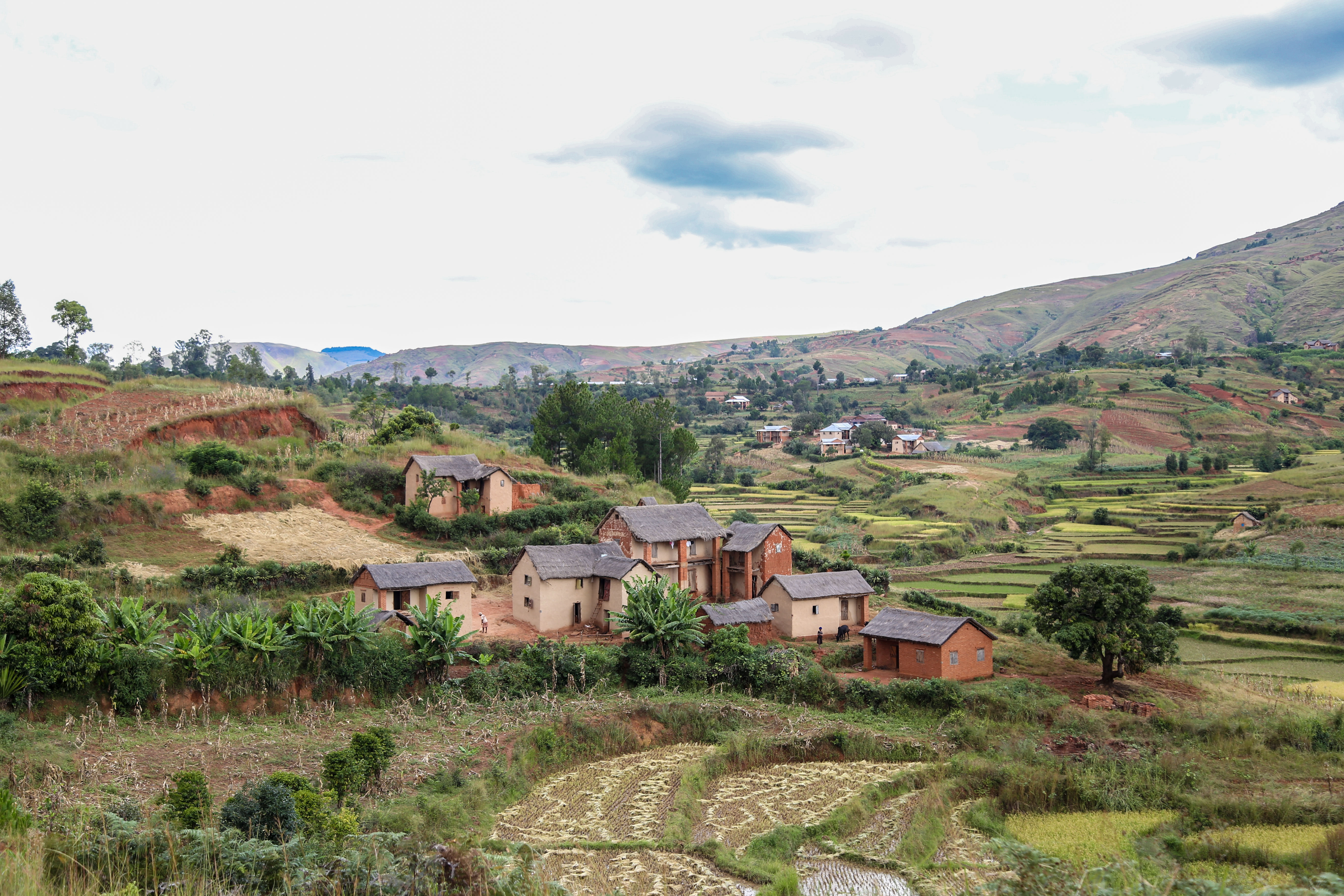
Photo credit: World Bank Photo Collection/Flickr
If you are interested in this topic, review the webinar presentation or watch the recorded webinar.
Evidence-Informed Decision-Making (EIDM) is not a static process. It is dynamic, hence the need to adapt and repurpose the old to succeed in the new. Reflection is a critical and integral component in this learning and adaptation process. Reflection assists in improving practices through the identification of weaknesses and strengths in the EIDM ecosystem. Reflection allows the development of metacognition and more robust learning to occur as people recognise past failures and successes that need rectification and strengthening. A key rationale for reflection is that experience alone does not necessarily lead to learning.
A more deliberate reflection on experience is critical as members get to see and label forms of thought and theory within the context of their work experiences and how these link to the EIDM ecosystem. Africa Evidence Network (AEN) members reflected during one of the EVIDENCE 2022 Conference over the last ten years' developments in the EIDM ecosystem in Africa, the various activities to support EIDM and their impact, what has worked, where and how. This process will lead to continuous adaptation and learning to improve the African EIDM ecosystem. The discussants included Mr James Ngumo from the Kenya Medical Research Institute (KEMRI), Dr Eliya Zulu from the African Institute for Development Policy (AFIDEP), Velia Manyonga from the Parliament of Malawi and Prof Taryn Young from the Centre for Evidence-based Health Care (CEBHC) at Stellenbosch University.
Pockets of Innovation in a Giant Evidence Ecosystem
Commendable developments in capacity development and innovation to strengthen EIDM characterise the last decade, but these 'are still small pockets in a giant evidence ecosystem.' In the last ten years, there has been much knowledge generation and evidence outputs due to various capacity initiatives. Yet, there has not been some corresponding utilisation of the same outputs by decision-makers. Political party manifestos predominantly drove the evidence agenda in countries such as Kenya. The Covid-19 pandemic, on the other hand, resulted in government technocrats and politicians demanding evidence resulting in some growth in evidence synthesis initiatives, including private and public partnerships around various thematic areas. The evidence ecosystem in Africa witnessed increased knowledge brokering.
Evidence from national and sub-national levels is now being used in decision-making in a co-production process that includes government, civic society, and academia. There has also been a shift from having old government technocrats to middle-aged ones who are more receptive to evidence and ask critical questions. These developments resulted in a change in focus on EIDM to ‘'evidence-informed actions,’' and an increased knowledge brokerage role. However, outdated strategies and approaches are still prevalent. There is also limited investment in knowledge generation and evidence synthesis by both funders and beneficiaries, including poor distribution of resources with a lot of resources spent on narrow and ineffective interventions.
Embedded EIDM Enabling Factors Exist in Parliaments
The last ten years saw increased evidence synthesis, particularly in the health sector, to obtain the totality of the evidence in answering specific clinical, health policy and health systems questions. Various reviews were generated to address the dangers of single studies, identify evidence gaps and avoid duplication in research. The evidence ecosystem in Africa is transforming into a dynamic space with many role players given its broad context, politics, funding, regulation and cultural factors. Thus, there is an increasing need to work together to address continental challenges and enhance impact. Originally researchers were passive, for example ample, in Malawi where they used to wait and anticipate evidence requests from decision makers like legislators.
Over the years, through different capacity development interventions from organisations like AFIDEP, they became more proactive in stimulating demand for evidence. By identifying the different evidence needs of legislators and members of the executive, they now have targeted approaches to evidence generation, translation and dissemination. The evidence is no longer generic. For example, they now contextualise the evidence to suit particular needs, including project implementation, allocation of resources, accountability, monitoring and evaluation. Considering the 5-year terms of legislators and the varying educational backgrounds, capacity development in Malawi is now continuous. One observation made in Malawi is that if the evidence is well packaged and accessible for legislators, they will utilise it because there are embedded enabling factors in Parliament. The ever-present competition between the opposition members of Parliament (MPs) and those from the ruling party means that if the other party does not use the evidence for political reasons, the other party will use that evidence for the same reasons. Most Standing Orders now have orders compelling MPs to use evidence in the legislative process, and internal structures like the research department, library, committees and budget offices have a mandate to support EIDM. Ongoing operations like orientation of new MPs, portfolio committee investigations and oversight meetings also provide opportunities to ensure routine use of evidence in Parliament.
From Evidence Generation to Demand Stimulation through EIDM Champions
The AEN has grown to be a vibrant Community of Practice (COP) mainly through the networking of its members, and it is now arguably the most substantial EIDM COP globally. Similarly, other member organisations like AFIDEP have also grown into influential institutions. They now possess the immense capacity to build a culture of evidence-use in Parliaments and other government institutions doing significant work. However, there is a need for more EIDM champions in government, civic society, academia and other stakeholders. Intermediary organisations must also increase in both numbers and capacity. Awareness of EIDM is now widespread on the continent as a result of the efforts of AEN members. There are still gaps in stimulating demand. Besides external sources, the government generates a lot of evidence, such as administrative data, census data and stakeholder engagement.
Going forward, EIDM should not just be about producing and disseminating evidence but enhancing engagement with the government by understanding the bottlenecks on both the demand and supply sides. It is not enough to have an improved capacity to generate research, but the transformation of researchers into EIDM experts through acquiring research intermediary and knowledge brokering skills. Whether for agenda setting, service delivery or monitoring and evaluation, EIDM must not be random but embedded and institutionalised so that there is a culture of routinely using evidence in decision-making. For example, countries like Malawi and Kenya have institutionalised EIDM in Parliamentary systems and government training institutes. Champions have also been identified within these institutions to advocate for EIDM.
Discussants identified four areas as important in ensuring the deep rooting of EIDM in Africa:
-
The professionalisation of the concept as a standalone discipline – Currently, EIDM is implied or embedded in other disciplines
-
Strengthening the brokerage role and messaging to enhance EIDM
-
Institutionalisation or embedding EIDM in policymaking institutions
-
Resourcing – mobilising government and the global community
The EIDM ecosystem is dynamic and flexible, with different pathways to enhance EIDM
Several developments over the last ten years resulted in important lessons learnt. Over time, it took a long time to generate evidence, but the previous ten years witnessed growth in rapid evidence synthesis, particularly in health. Rapid reviews and Health Guidelines were developed in countries like Zimbabwe and South Africa by multidisciplinary teams, and this enhanced the responsiveness to urgent policy evidence needs without compromising quality.
The different interventions and innovations amplified the diversity of role players in the evidence ecosystem. An essential lesson obtained from this was that in whatever we do, we are all working towards one goal – to make a positive difference for humanity through evidence. Evidence institutional structures and processes are critical in EIDM. However, there is a need for leadership to champion evidence generation, and timing is equally important - when does evidence matter, to whom and for what?
The evidence ecosystem is dynamic and flexible, so different pathways exist to enhance EIDM. Artificial intelligence and machine learning technology have immense potential to support EIDM, especially when addressing intersectoral and multidisciplinary challenges. Targeting end-users by using different approaches and pathways that recognise the importance of context and culture is critical. There is a need for more networking and sharing of lessons learnt. AEN is well positioned to do so as a PAN African group spanning various initiatives, sectors and disciplines in different countries. With such a complement of a diversity of roles, all types of evidence collaborations can be fostered by unlocking the power of relationships, exploring opportunities and advocating together for growth and impact.
About the author: Ronald Munatsi is the Director of the Zimbabwe Evidence Informed Policy Network (ZeipNET). ZeipNET works to interface evidence and policy through evidence synthesis initiatives, including institutional capacity building focusing on the interface between research and policy with an emphasis on strengthening capacities across individual, institutional and systemic levels.
Acknowledgements: The author(s) is solely responsible for the content of this article, including all errors or omissions; acknowledgements do not imply endorsement of the content. The author is grateful to Charity Chisoro for her guidance in the preparation and finalisation of this article as well as her editorial support.
Disclaimer: The views expressed in published blog posts, as well as any errors or omissions, are the sole responsibility of the author/s and do not represent the views of the Africa Evidence Network, its secretariat, advisory or reference groups, or its funders; nor does it imply endorsement by the afore-mentioned parties.
Suggested citation: Munatsi, R. (2022) 3R of Evidence-Informed Decision-Making: Reflection, Repurposing and Repositioning. Blog posting on 19 September 2022. Available at: https://www.africaevidencenetwork.org/en/learning-space/article/223/




